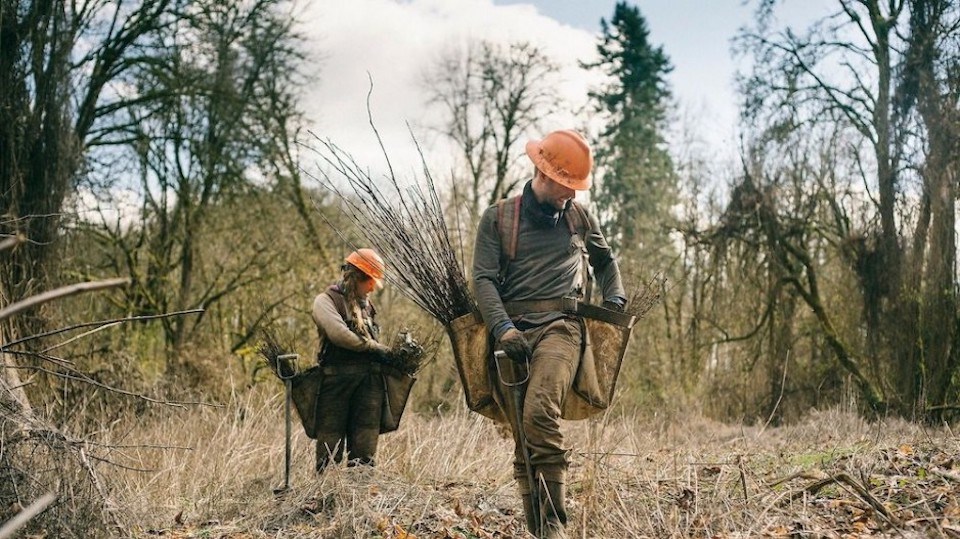Delegates at the UN Biodiversity Conference (COP15) in Montreal this week will no doubt be hearing from environmental groups, scientists and policymakers about the climate benefits of preserving and enhancing Canada’s forests, grasslands, peatlands and marshes.
And apart from climate change mitigation, there are other good reasons to enhance habitat conservation – preservation of biodiversity chief among them.
But a major by the Canadian Council of Academies warns that nature-based climate solutions (NС����ƵS) – i.e. carbon sinks -- have their limits as a climate change mitigation strategy, and should not be counted on as an alternative to other GHG mitigation pathways.
“Despite increasing attention on the potential of natural carbon sinks to support climate policy, there are limitations to this approach,” the 196-page report, Nature-Based Climate Solutions, says in its forward.
The peer-reviewed report was prepared for Environment and Climate Change Canada and drew on experts from Royal Society of Canada, the Canadian Academy of Engineering, and the Canadian Academy of Health Sciences.
Canada’s sheer size means it has greater potential for preserving or enhancing natural carbon sinks than most countries, and the biggest carbon bank is Canada’s forests. But at best, nature based climate solutions can shave a “modest” 6% off of Canada’s total greenhouse gas inventory.
“We concluded that NС����ƵSs can contribute to meeting Canada’s emissions reduction commitments, but this contribution is modest and thus, will require strong action in many other sectors,” the report says. "Even achieving the approximate 6% reduction via NС����ƵSs will require aggressive policy support."
In other words, buying carbon offsets in forestry conservation projects won’t accomplish much if the company or organization making the investment are doing nothing else to reduce their emissions from the use of fossil fuels.
The report suggests the climate benefits of NС����ƵS are front-loaded, with the greatest carbon sequestration happening in the first 30 years, then gradually declining.
“It is assumed that carbon storage through nature-based climate solutions is temporary as forests are vulnerable to both natural and human disturbances,” the report says. “Therefore, nature-based climate solutions are anticipated to withdraw carbon from the atmosphere over the next 30 years then slowly release the carbon during the second half of the century.”
The report also highlights the risk that climate change poses to these climate change solutions. Peatlands in Canada’s north, for example, are massive carbon banks, but as northern permafrost thaws, these peatlands could become equally massive emitters of both CO2 and methane. And wildfires can turn forests from carbon sinks to carbon sources overnight.
“By 2018, Canada’s managed forests were estimated to be a net source of CO2, due to large-scale natural disturbances, including the burning of more than 1.4 million hectares,” the report’s section on forestry says.
“What we highlight in the report is that Canadian carbon stocks – so all the carbon that is bound in forests, and peatlands also in permafrost regions – is vulnerable in the face of climate change,” said Kirsten Zickfeld, distinguished professor of climate science at Simon Fraser University, who was among the panel of experts contributing to the report.
“So that presents a real risk that could overwhelm any progress that we make in enhancing carbon solutions from ecosystems.”
The report says climate change mitigation isn’t the only justification for preserving and enhancing natural ecosystems, however. Enhanced ecosystems are also an important part of climate adaptation. Enhanced marshlands, for example, can help mitigate damage from seasonal flooding.
“Many NС����ƵSs can provide tangible social and economic co-benefits, including those associated with property values, avoided flood damages, improvements in recreation experiences, improvements in threatened species’ conditions, and biodiversity maintenance," the report says. "Even where GHG mitigation benefits are low, these co-benefits alone often justify wider adoption of such practices.”
Zickfeld said the main takeaway from the report is that nature-based climate solutions can play “a supporting role,” not a primary one, in Canada’s greenhouse gas reduction goals.
“Sectors cannot proceed on a business as usual path in hope that we can use nature based climate solutions to offset those emissions,” Zickfeld said. “So yes, nature-based climate solutions can play a supporting role, but they can’t be the full deal.”





